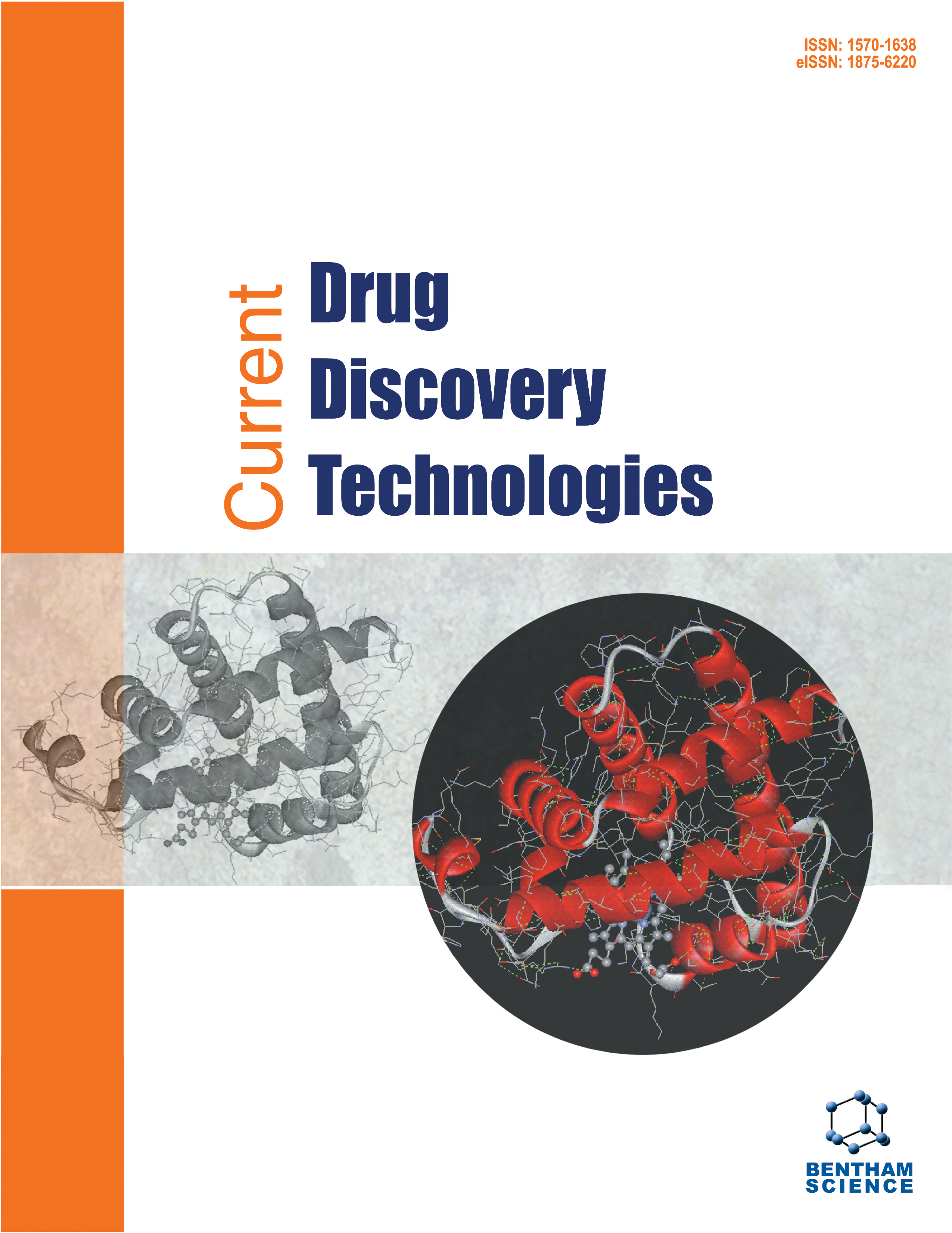- Home
- A-Z Publications
- Current Drug Discovery Technologies
- Previous Issues
- Volume 4, Issue 3, 2007
Current Drug Discovery Technologies - Volume 4, Issue 3, 2007
Volume 4, Issue 3, 2007
-
-
Predictive QSAR Modeling for the Successful Predictions of the ADMET Properties of Candidate Drug Molecules
More LessAuthors: Mahmud T. H. Khan and Ingebrigt SylteChemical breakthrough generates large numbers of prospective drug molecules; the use of ADMET (absorption, distribution, metabolism, excretion and toxicity) properties is flattering progressively more imperative in the drug discovery, assortment, development and promotion processes. Due to the inauspicious ADMET properties a huge amount of molecules in the development stage got failure. In the past years several author Read More
-
-
-
Computational Analysis of Adhesion of Primer Ligands to Dentinal Collagen: Effect of Spacer Groups in Ligand and Amino Acid Residue Sequence Differences in Collagen
More LessAuthors: J. Vaidyanathan, S. Ravichandran and T. K. VaidyanathanThis study sought to assess by computer modeling the interactions between dentinal collagen and primer monomer ligands used to promote bonding of restorations to tooth. Modeling was carried out both by direct and indirect methods to probe interaction mechanisms. Ligands studied in this investigation conformed chemically to methacrylate phosphates of alkane diol, with changes in the number of methylene spacer gr Read More
-
-
-
Biologic Aspects of Thrombopoietin and the Development of Novel Thrombopoietic Agents for Clinical Use
More LessAuthors: Maria L. Evangelista, Sergio Amadori and Roberto StasiThrombocytopenia is a frequent finding in several clinical settings, including bone marrow failure associated with various disorders, immune-mediated thrombocytopenia, and chronic liver diseases. Currently, there is an unmet need for thrombopoietic agents to treat this condition. Thrombopoietin (TPO) is the key cytokine involved in thrombopoiesis, and is the endogenous ligand for the thrombopoietin receptor that Read More
-
-
-
Alternative Splice Variants of Survivin as Potential Targets in Cancer
More LessAuthors: Janardhan Sampath and Louis M. PelusSurvivin, a member of the IAP family is an attractive target for cancer treatment due to it's over expression in most cancers and low or no expression in most differentiated adult tissues. Survivin expression is a poor prognostic marker in a number of cancers. Clinical trials are currently underway evaluating anti-sense oligonucleotides against Survivin, immunotherapy using Survivin primed dentritic cells and peptide mimi Read More
-
-
-
Influence of Sulfobutylether-β-Cyclodextrin on the Stability of S- and Romeprazole
More LessAuthors: Snezana Agatonovic-Kustrin, Desmond Williams, Nader Ibrahim and Beverley D. GlassOmeprazole (OME), a proton pump inhibitor used to treat acid reflux disease and gastric ulcers presents a formulation challenge due to its rapid decomposition at acidic and neutral pHs. Thus, the aim of this project was to investigate whether interaction with sulfobutylether-β-cyclodextrin (Captisol®-CD) could improve omeprazole stability and provide more efficient oral liquid formulations. A stability-indicating high perform Read More
-
-
-
Design and Synthesis of New N1 and C3-Substituted 4-Fluoroindolic Melatoninergics
More LessAuthors: Andrew Tsotinis, Andreas Eleutheriades, Kathryn Davidson and David SugdenA series of new C-3 and N1-substituted 4-fluorotryptamides have been prepared and tested for their ability to activate pigment granule aggregation in Xenopus laevis melanophores and bind to the recombinant human MT1 and MT2 melatonin receptor subtypes expressed in NIH 3T3 cells. Planar sp2 geometry at C-3-βC seems to decrease the population of the preferred conformation as it renders 4-fluoroindoles 4b-d weaker anta Read More
-
-
-
Molecular Approaches to Cervical Cancer Therapy
More LessAuthors: Luis M. Alvarez-Salas and Joseph A. DiPaoloCervical cancer is the second most common malignancy in women worldwide. Two HPV strains, HPV-16 and 18, occur in the 70% of untreated cancers. Expression of viral oncogenes E6 and E7 disrupt the cell cycle by interfering with p53 and p107Rb. It is known that HPV infection is necessary but insufficient to cause malignancy. Furthermore, persistence of HPV-16 or 18 in women does not necessarily result in cance Read More
-
Volumes & issues
-
Volume 22 (2025)
-
Volume 21 (2024)
-
Volume 20 (2023)
-
Volume 19 (2022)
-
Volume 18 (2021)
-
Volume 17 (2020)
-
Volume 16 (2019)
-
Volume 15 (2018)
-
Volume 14 (2017)
-
Volume 13 (2016)
-
Volume 12 (2015)
-
Volume 11 (2014)
-
Volume 10 (2013)
-
Volume 9 (2012)
-
Volume 8 (2011)
-
Volume 7 (2010)
-
Volume 6 (2009)
-
Volume 5 (2008)
-
Volume 4 (2007)
-
Volume 3 (2006)
-
Volume 2 (2005)
-
Volume 1 (2004)
Most Read This Month
Article
content/journals/cddt
Journal
10
5
false
en


